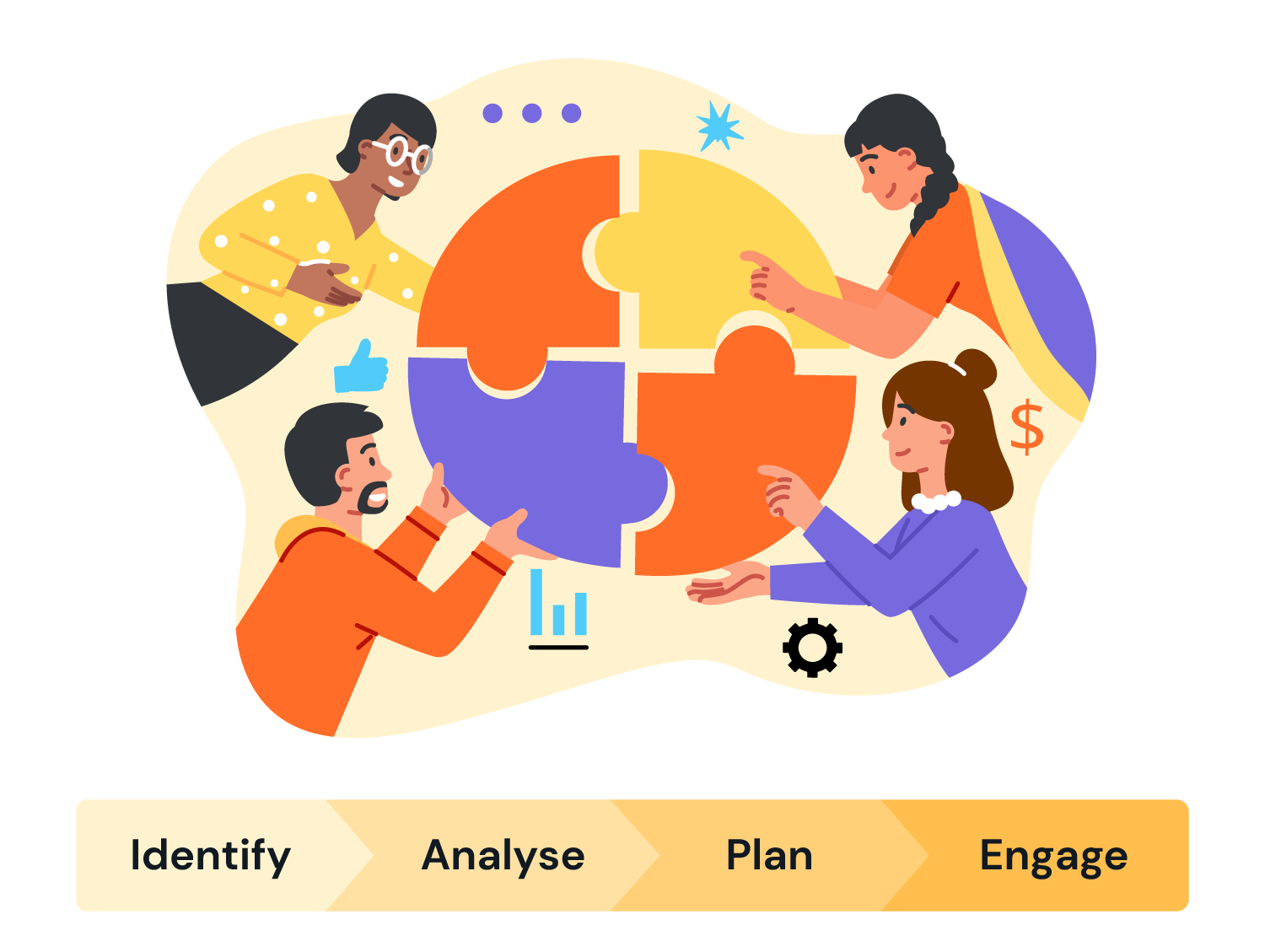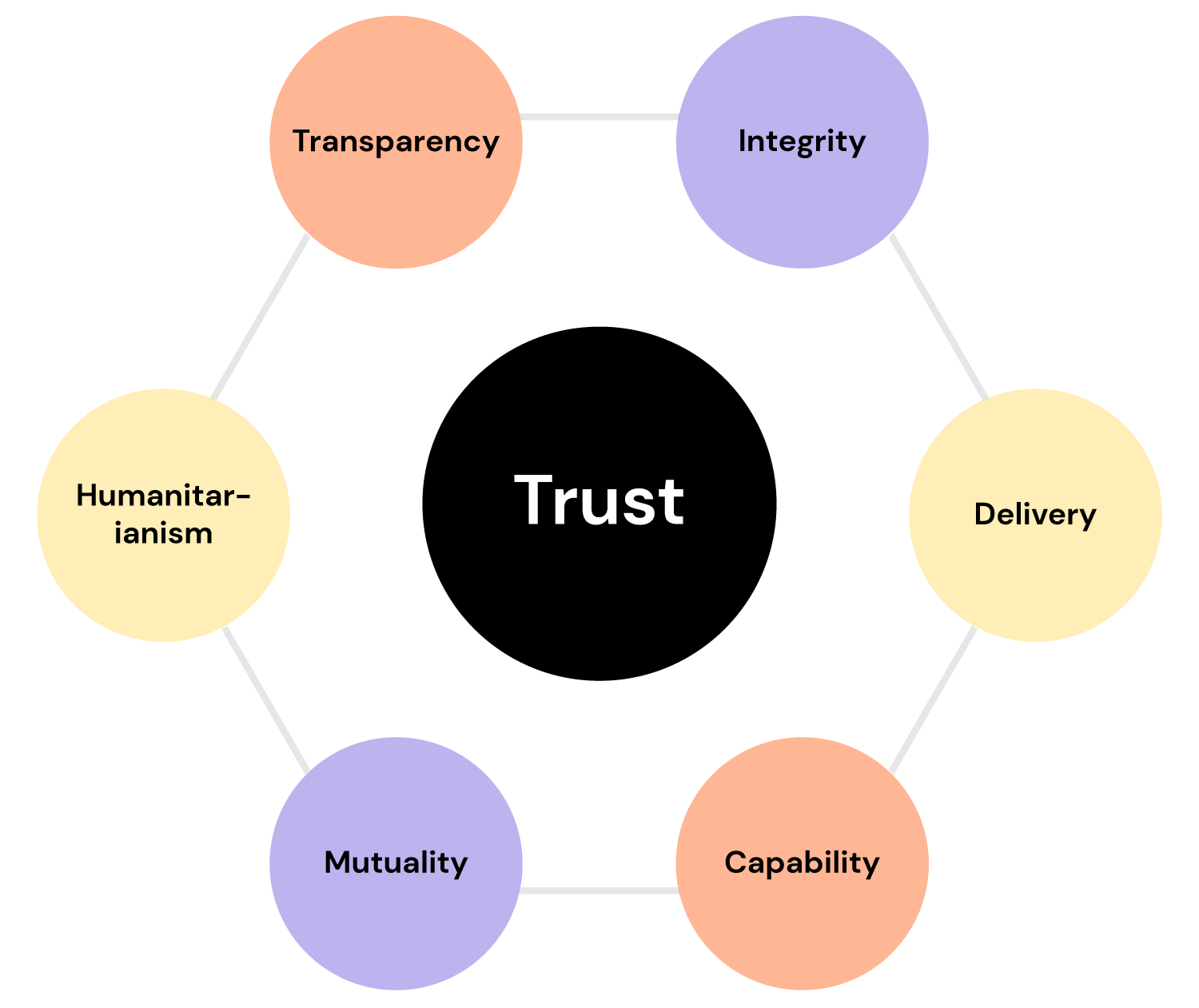Once you start considering every single person who could be a stakeholder and then their extended network, the list starts to feel overwhelmingly big. You see, a stakeholder is anyone that is impacted by your organisation or has an influence over it – and that can be a lot of people. So, an effective stakeholder relationship management strategy is essential.
Maintaining positive stakeholder relationships helps groups work together more effectively and enables more holistic decision-making.
If you get the stakeholder engagement process right, then your stakeholders might become champions of your project. They will be more accepting of your decisions and might even help you deliver positive outcomes.
However, if you fail at communicating with stakeholders, you could encounter unnecessary project costs and major delays. Stakeholder resistance is a major risk so it’s essential to get your engagement strategy right.
Here are seven foundations for highly effective stakeholder relationship management.
1. Identify and prioritise key stakeholder relationships
Identifying stakeholders accurately is essential. More often than not, stakeholders will fall into two groups.
Those who:
- Have a vested interest in the project
- Are affected by the project outcomes
These two groups can be further split into those who are:
- Directly involved in the project
- Who have influence over decisions
- Who need to stay informed about the process and decisions
Your stakeholder groups should be organised according to their influence and impact, so that you can develop a tailored engagement strategy.
Every stakeholder group will expect to be kept in the loop in different ways. Some stakeholders will want highly specific information, whereas others might want you to give them high-level insights but to showcase clear results.
You can’t use a blanket approach to communicating with stakeholders, and you need to make sure that you have a clear understanding of who they are and what they care about.
Underestimating the impact of certain stakeholders is also a high risk, so be sure to do your analysis and take the time to identify influential stakeholders who could either endorse or resist your project.
If you’re using stakeholder management software, then look to your past projects to leverage historical relationship insights.

2. Clearly communicate the project scope to stakeholders
It’s important to be transparent from day one. Acting with consistency and integrity is essential in building stakeholder trust so that you can have more productive relationships.
Tell your stakeholders the process you will use to communicate information to them right from the start. It’s also important to clearly explain how their input into your project will affect the outcomes and to what extent you will engage them in decisions.
People are more willing to engage when they understand their influence over the final outcome, the decision-making process, and what is negotiable and what is not.
3. Gain stakeholder trust right from the start
You can build more trust if you communicate with people early and frequently so that they fully understand the benefits of your project. Having an understanding of a situation means people are more likely to support you when necessary.
It also means even if stakeholders don’t agree with the final decision, they have the benefit of understanding the process, history, and the trade-offs made. Therefore, they will be less likely to strongly object at the final stage.
Engaging early and being transparent won’t open a can of worms, rather it can help you shape the narrative and build consensus.

4. Be consistent in your communications and messaging
Stakeholders are empowered with more information than ever before and they can easily spot inconsistencies. As a result, an inconsistent message can lead to public outrage, loss of trust, and a negative reputation.
Your stakeholders value accurate information and want to know they can rely on you to keep them updated throughout the project lifecycle. If you have brought stakeholders on the journey with you and they have faith in your plan, they will be far more likely to help you overcome any hurdles that may arise along the way.
5. Meet with stakeholders who are resistant to change
Wouldn’t the world be a much nicer place if we all agreed on everything? Unfortunately, if it were true, we would lose creativity, innovation, and uniqueness.
All projects will include people who love, hate or want to change your project idea. It’s our job to find a way to balance these differing views.
If you avoid the opposition you might invest heavily in a decision, then receive resistance and backlash about the project in the final hour. To prevent this from happening, it’s important to regularly meet with key stakeholders who are resistant to change. The meeting could be in person, by email, or through a phone call.
Involving stakeholders in decisions and listening to concerns empowers you to navigate the change management process more effectively.
In the instance where stakeholders are resistant to change, it’s important to discuss the project scope. Some things aren’t negotiable and it’s important to show stakeholders what influence they do have to shape the project.
Helping your community to embrace change is a powerful way to manage stakeholder conflict and build positive stakeholder relationships.
6. Leverage a stakeholder relationship management platform
It’s important to reflect on the insights you receive from your stakeholders and store the conversations accurately. If you have a meeting with a stakeholder then write a summary of the event.
What was the meeting about? What were the key findings? Are there any follow-up actions required? When is the next meeting?
Use your stakeholder relationship management to its full potential and analyse how sentiment changes over time then tweak your engagement strategy as required. You can also analyse top issues as they arise and improve the responsiveness of your team.
7. Don’t avoid problems
Some of us love surprises but catching your stakeholders off-guard can result in negative sentiment.
Most stakeholders like to be given an early view of risks and issues, and respect accountability. Rather than sweeping issues under the rug, you should address problems proactively.
You don’t have to share every single minor issue as it occurs. But you should address major issues that will impact your stakeholders and go into meetings and interactions with prepared solutions in mind. Share the various options available to resolve the issue and then ask stakeholders to add their input to make an informed decision about the next steps.

